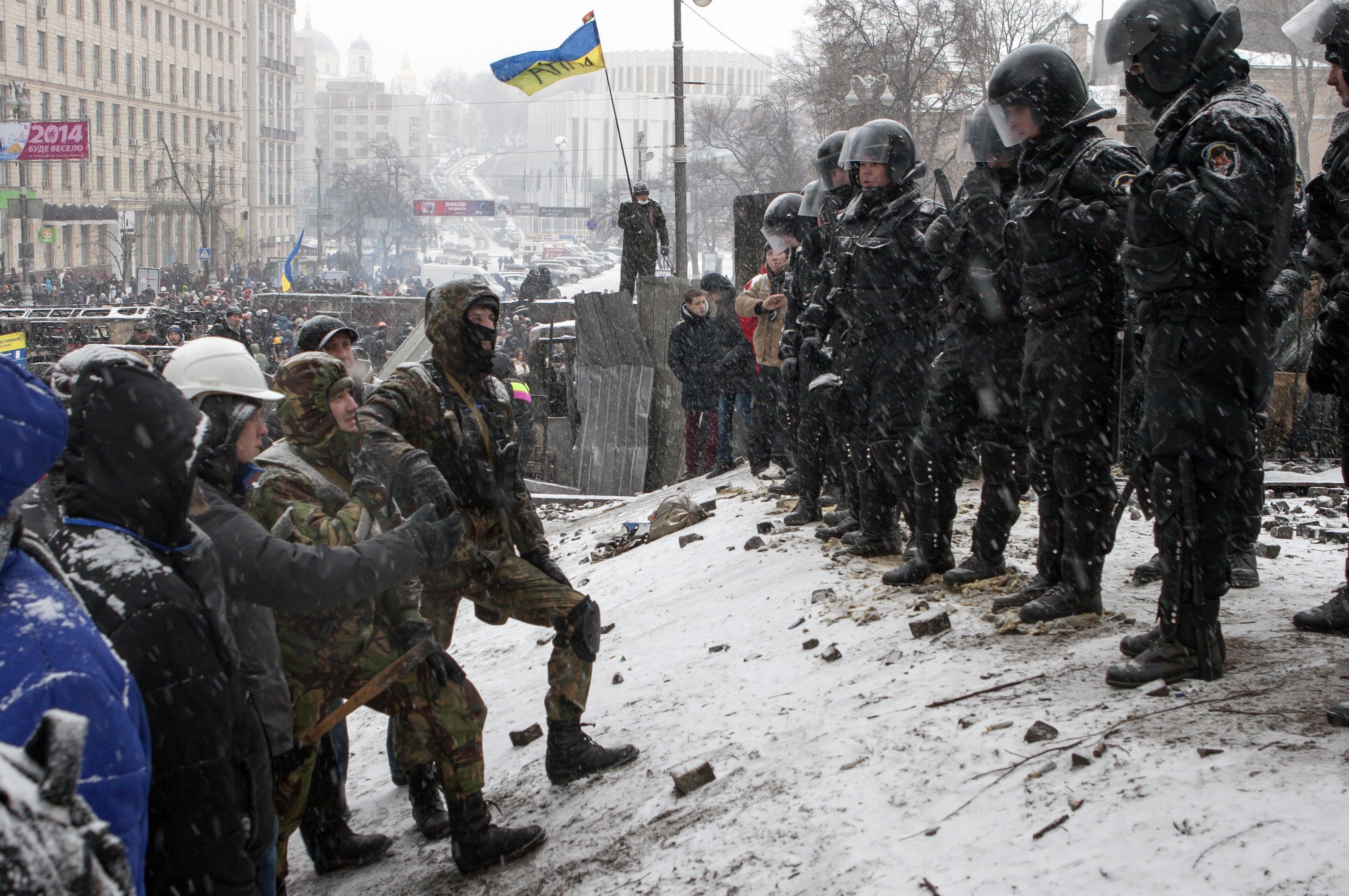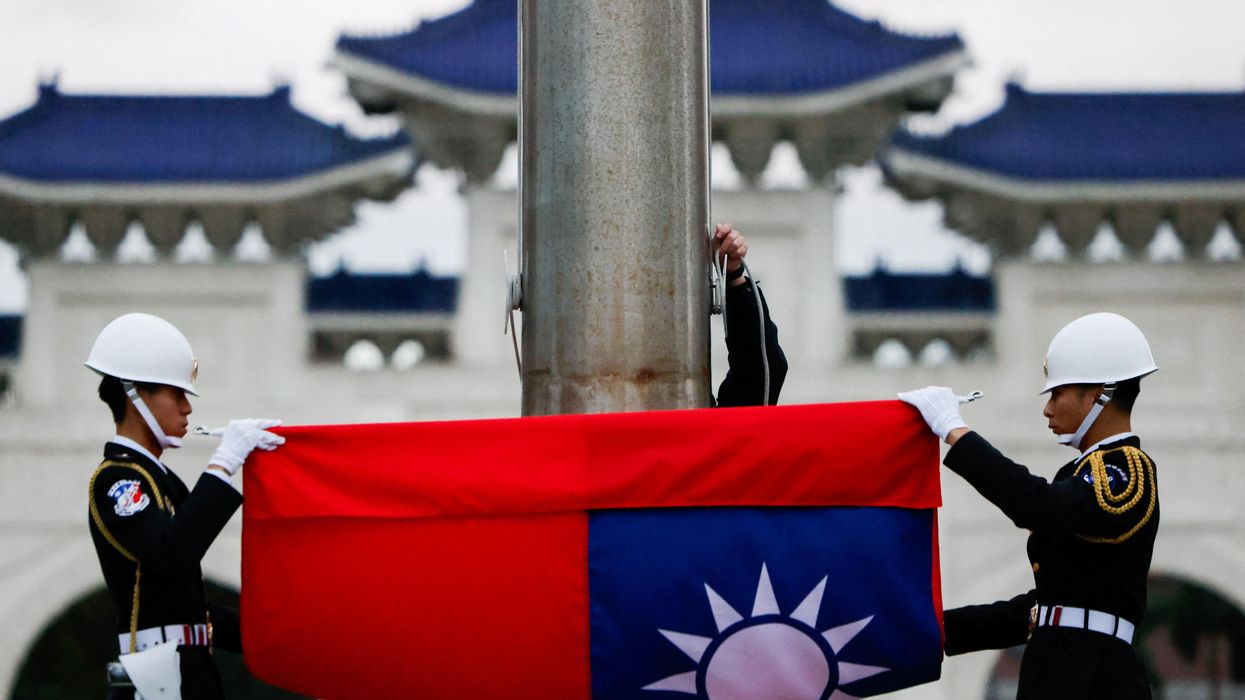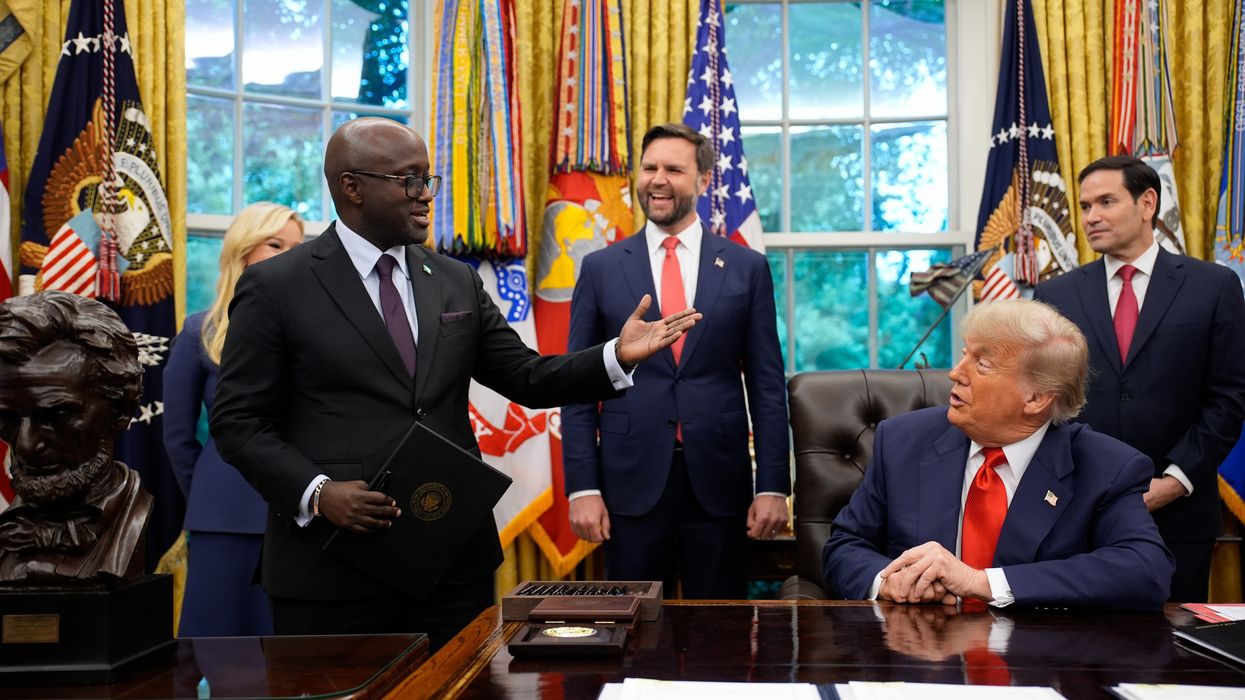The revolutionary violence that swept Kyiv’s Maidan Square on the night of February 21, 2014 unleashed the forces of Ukrainian nationalism and, ultimately, Russian revanchism, and resulted in, among other things, the first full-scale land war in Europe since 1945.
President Volodymyr Zelensky has called the Maidan the “first victory” in Ukraine’s fight for independence from Russia. Yet too often lost in the tributes to Ukraine’s ‘Revolution of Dignity’ are two simple, though ramifying, questions: What was the Maidan really about? And did things have to turn out this way?
Revisiting the events of that time may help us more fully understand how we arrived at this fateful moment in world affairs.
So, what precipitated the Maidan Revolution?
In November 2013, Ukrainian President Victor Yanukovych rejected the terms of the European Union Association Agreement in favor of a $15 billion credit agreement offered by the Russian Federation. Many in the western part of Ukraine had supported the EU deal, as it would have, in their view, secured Ukraine’s future within Europe.
But, as the Europeans, Americans, Ukrainians and Russians knew full well, the association agreement with Brussels wasn’t merely a trade deal. Section 2.3 of the EU-Ukraine association agenda would have required the signatories to:
"...take measures to foster military cooperation and cooperation of technical character between the EU and Ukraine [and] encourage and facilitate direct cooperation on concrete activities, jointly identified by both sides, between relevant Ukrainian institutions and CFSP/CSDP agencies and bodies such as the European Defence Agency, the European Union Institute for Security Studies, the European Union Satellite Centre and the European Security and Defence College."
In other words, the trade deal also included the encouragement of military interoperability with forces viewed, rightly or wrongly, by the Russian government as a threat to Russian national security.
In addition, the EU association agenda required Ukraine to put up barriers to trade with Russia. An alternative proposal put forward by Romano Prodi (former Italian Prime Minister and EU Commission president) would have allowed Ukraine to trade with both Russia and the EU but was rejected by Brussels.
Yanukovych’s rejection of the EU agreement brought thousands of protesters to Kyiv’s Independence (Maidan) Square. Yet policy disagreements over issues of trade and national security can and are routinely adjudicated via democratic procedures, as they are in the U.S. and Europe. And such an adjudication was eminently possible, even as late as the morning of February 21, 2014, when a deal brokered by Russia and the EU was struck between Yanukovych and the Ukrainian opposition that included a revision of Ukraine's constitution, the creation of a unity government, and an early presidential election to be held 10 months later in December 2014.
But on the night of February 21, Yanukovych fled, and a new government was installed by voluntarist rather than democratic means. The immediate post-Maidan government included the far-right Svoboda Party, whose members, according to a contemporaneous Reuters report, held “five senior roles in Ukraine's new government including the post of deputy prime minister.”
Edmund Wilson once wrote that “it is all too easy to idealize a social upheaval which takes place in some other country than one’s own.” And that was a trap into which the Obama administration — along with almost the entirety of the American media, intelligentsia and think tank world — fell in the immediate aftermath of the Maidan.
It would be fair of critics of this view (and there are many) to ask: What were their alternatives to the Obama administration’s support for the Maidan and Kyiv’s post-revolutionary government?
Mr. Obama might have said “A deal was struck. Stick to it.” This would have required a degree of statesmanship unusual to any American president. But, as Eurasia Group president Ian Bremmer observed only a month later,
"...there was a deal that was cut with the European foreign ministers. That deal was abrogated and the Americans were very happy to jump on that immediately in ways that would have been completely unacceptable to anyone in the U.S. administration if we had been on the other side.”
And so, the U.S. lent its support to the post-Maidan government (and the Anti-Terrorist Operation, or ATO, launched in April 2014) against the largely, but of course far from entirely, indigenous uprising in the Donbas. Thus began the first phase of the war, which lasted until the evening of February 24, 2022 and cost 14,000 dead and 1.5 million refugees.
In addition to the ATO, Kyiv also pursued a policy of decommunization in the east (later cited by Putin as among his many grievances with post-Maidan Kyiv) and repeatedly refused to implement the Minsk Accords. As a former U.S. Ambassador to the USSR, Jack F. Matlock, noted in Responsible Statecraft, “The war might have been prevented — probably would have been prevented — if Ukraine had been willing to abide by the Minsk agreement, recognize the Donbas as an autonomous entity within Ukraine, avoid NATO military advisors, and pledge not to enter NATO."
The second phase of the war opened on the evening of February 24, 2022, as some 190,000 Russian troops invaded Ukraine. The costs to Ukraine have been staggering.
The World Economic Forum recently estimated that the cost of Ukrainian reconstruction will reach $1 trillion. Still more, “Approximately 20% of the country’s farmland has been wrecked and 30% of land either littered with landmines or unexploded ordnance.” Casualty estimates are known to be among the most closely held state secrets during wartime, but some, like former Ukraine prosecutor general Yuriy Lutsenko, have estimated Ukraine suffered a combined 500,000 dead and wounded in its war with Russia. Meanwhile, the population of Ukraine has plummeted from 45.5 million in 2013 to an estimated 37 million today.
Looking back, the warnings issued by a small minority in the winter of 2014, including, but not limited to: the present authors; Professor Stephen F. Cohen; The Quincy Institute’s Anatol Lieven; Ambassador Jack Matlock; Professor John J. Mearsheimer; and others were dismissed by the Obama administration, policymakers, the media and the most influential think tanks in Washington. Yet the effort to wrest Ukraine into the West’s orbit via revolutionary violence, despite the objections of fully a third of that country, has been nothing short of catastrophic.















